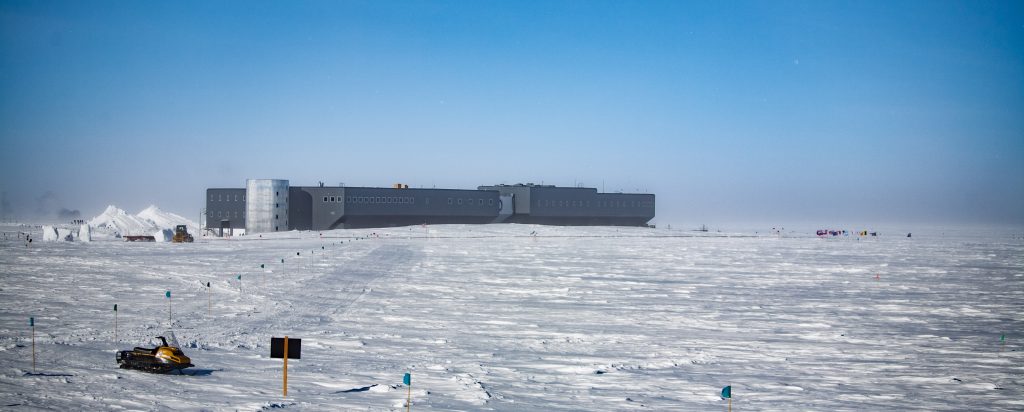
By Patrick Cullis, CIRES and NOAA scientist
Every year, before the Antarctic Ozone Hole begins to form early in the austral spring, preparation is ongoing for a new crew getting ready to spend a year living and working at the South Pole Station. The crew needs to arrive at the South Pole ready to carry on critical atmospheric observations in one of the most extreme locations on the planet.
NOAA’s South Pole Ozone Hole Webpage
Every crew prepares for the frigid temperatures and isolation of the polar night, but with extremely limited operations and strict quarantine protocols, this year may prove to be one of the most isolated yet. The two-person crew preparing to deploy this year is composed of LTJG Timothy Holland and Joseph Samaniego, Ph.D. Tim is a NOAA Corps officer who spent the past year running NOAA’s Atmospheric Observatory in American Samoa. He was operating instruments that keep track of ozone and ozone-depleting substances as the island went in to lock-down due to the outbreak of COVID-19. Prior to joining the NOAA Corps, he was a biomedical flight controller for the International Space Station at NASA’s Johnson Space Center. LTJG Holland’s academic background is in Aerospace Engineering and Space Studies. Joseph Samaniego is a graduate researcher at the University of Colorado. He completed his PhD in Physics and has a background in astronomy and space.

NOAA operates several different types of instrumentation to measure ozone in our atmosphere. One of those methods is to measure ultraviolet radiation from the Sun using an instrument called the Dobson Spectrophotometer. These measurements use the fact that ozone molecules located high in the stratosphere absorb harmful ultraviolet radiation that causes cell damage in plants and animals and is the primary cause of skin cancer. However, during the Polar winter, the only natural source of light is the moon. Thus, Tim and Joseph recently joined Glen McConville of the Ozone and Water Vapor Group in the evening to learn how to measure ozone under the moon-lit skies. It is important to learn how to handle an instrument in the comfort of summer in Colorado before arrival at the South Pole where temperatures can drop to -70 degrees C.

Training in Boulder also involves practicing how to launch weather balloons that carry instrumentation high in to the atmosphere to directly measure this stratospheric ozone above Antarctica. With the extreme temperatures of the polar night, where stratospheric air temperatures plunge below -90 degrees Celsius, specialized balloons are used to withstand this brutal environment. Large plastic balloons designed to work in these temperatures are launched in the complete darkness of the Antarctic winter, until the return of sunlight in spring. The balloon-borne instruments measure ozone and temperature distribution all the way up to 35km (115,000 feet) above the surface before they burst and return to Earth by parachute.
Both Dobson and ozonesonde instruments help to collect information about the health of the ozone layer above the Antarctic continent. Every year since the 1980s, scientists have observed the development of the so-called “Ozone Hole” that forms when CFC’s, molecules released by human activity throughout the 1900’s, react with and destroy the ozone molecules above Antarctica. The very cold temperatures and stability of the polar vortex create optimal conditions for the rapid destruction of protective ozone in September and in to October. The Montreal Protocol, finalized in 1987, phased out the production and release of the most harmful chemicals, but some of these chemicals will remain in the atmosphere for over 100 years. Therefore, NOAA’s dedicated team of researchers in Boulder, Colorado and technicians stationed at the Amundsen-Scott South Pole Station continue their mission to monitor the ozone layer with these specialized instruments.

